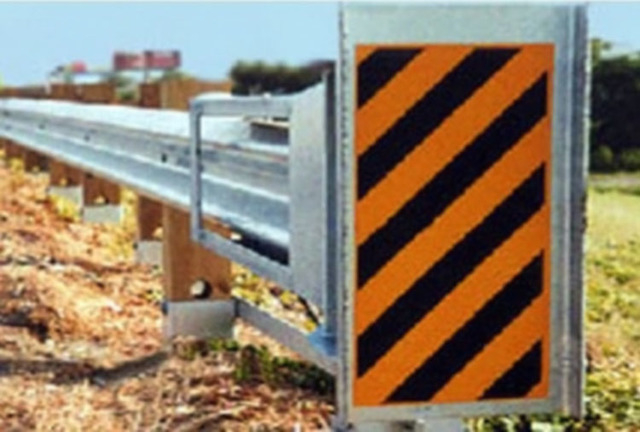Nevada awaits guardrail safety analysis

When the Nevada Transportation Department decided early this year not to install any more of Trinity Highway Products’ ET-Plus guardrails in the state, leaders had no idea how controversial they would soon become.
In the 10 months since Nevada rejected the guardrails, the ET-Plus has vaulted into the national spotlight after two other states banned them and the Federal Highway Administration ordered them to be tested after five deaths in 14 accidents nationwide.
The deaths have been attributed to structural failures that occurred in crashes after Dallas-based Trinity modified the design of the front of the guardrail, called the end terminal or guardrail head.
The guardrails, which had an end terminal 5 inches wide, are supposed to cushion the impact of a vehicle striking them in an accident.
When Trinity redesigned the product in 2005 to save material costs and installed a 4-inch end terminal in the redesign, the guardrails worked differently when struck.
Instead of cushioning the blow and absorbing the impact, the guardrails speared some of the vehicles that hit them, severing the limbs of people inside.
John Terry, the Transportation Department’s assistant director and chief engineer, recently returned from the annual meeting of the American Association of State Highway and Transportation Officials in Charlotte, N.C. Terry said the Federal Highway Administration concurred with the organization’s recommendation that the new version of the ET-Plus be safety tested.
“It’s a detail, but a relatively important detail,” Terry said of the 1-inch difference between the end terminals produced prior to 2005 and those made afterward.
Terry said the decision to ban use of the product in January had nothing to do with accidents or crashes.
When the department learned that the design had been changed, the guardrail was removed from the state’s qualified products list because the state has a policy requiring companies to notify it of any changes on products before they are installed on highways.
After Nevada banned the product, other states took notice.
Florida, which has a similar policy requirement on design change notifications, didn’t take immediate action, but state lawmakers are looking to launch an investigation.
As investigators reviewed accidents in Florida, Virginia, Tennessee and Texas, and lawsuits were filed by accident victims, transportation leaders nationwide took a closer look at the problem.
Missouri and Massachusetts banned use of the ET-Plus.
Terry said the association meeting in Charlotte was an opportunity for more states to weigh in on the issue and the recommendation for testing was made.
Initially, the Federal Highway Administration backed Trinity.
When Phoenix ABC television affiliate KNXV reported in April on Arizona’s decision not to remove the guardrail from its transportation department’s products list, Trinity officials said they were working with Nevada to get the product reinstated and that they were confident in the newer design.
“With regards to the Nevada Department of Transportation, the Federal Highway Administration reaffirmed its acceptance of the ET-Plus system for use on U.S. highways,” said Trinity’s Jack Todd, vice president of public affairs.
“Trinity and Texas A&M University continue to have a high degree of confidence in the performance and integrity of the ET-Plus system. In order to reinstate the product on Nevada’s qualified provider list, we are currently engaged in discussions with the Nevada Department of Transportation to answer any questions they have related to the ET-Plus system.”
Trinity manufactures the product through a license from Texas A&M.
Nevada will await the outcome of the testing, which is expected to be completed by year’s end, before making a decision on whether to reinstate the product to the qualified products list as well as what to do with any guardrails that have the smaller end terminals.
Terry said the California Transportation Department had some surplus guardrails with the 4-inch end terminals on hand that were to be shipped to San Antonio for testing.
Terry said it’s unclear how many, if any, of the guardrails with the smaller end terminals are installed on Nevada’s highways.
When a guardrail is damaged in an accident, transportation crews usually are dispatched to repair it rather than replace it.
There is no database showing where and when guardrails are installed or replaced, Terry said.
He said because the equipment is no longer on the qualified products list, it hasn’t been used on any projects this year.
Once the guardrail testing has been completed and the Federal Highway Administration makes a determination whether they are safe, the state will re-evaluate the ET-Plus system.
If officials determine that the product is flawed, the state would be faced with inspecting the thousands of guardrails statewide to determine whether any of the 4-inch end terminals were installed.
Contact Richard N. Velotta at rvelotta@reviewjournal.com or 702-477-3893. Find him on Twitter: @RickVelotta.












